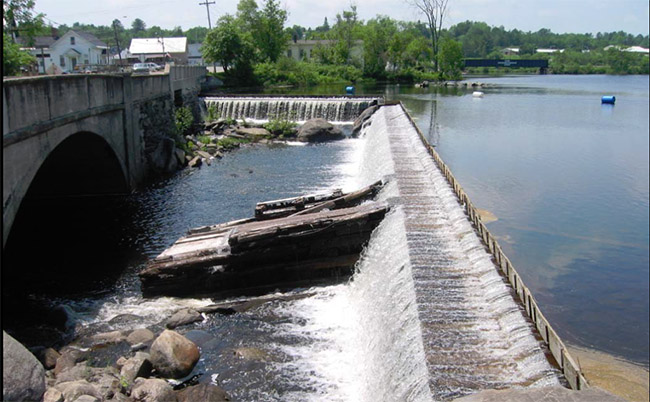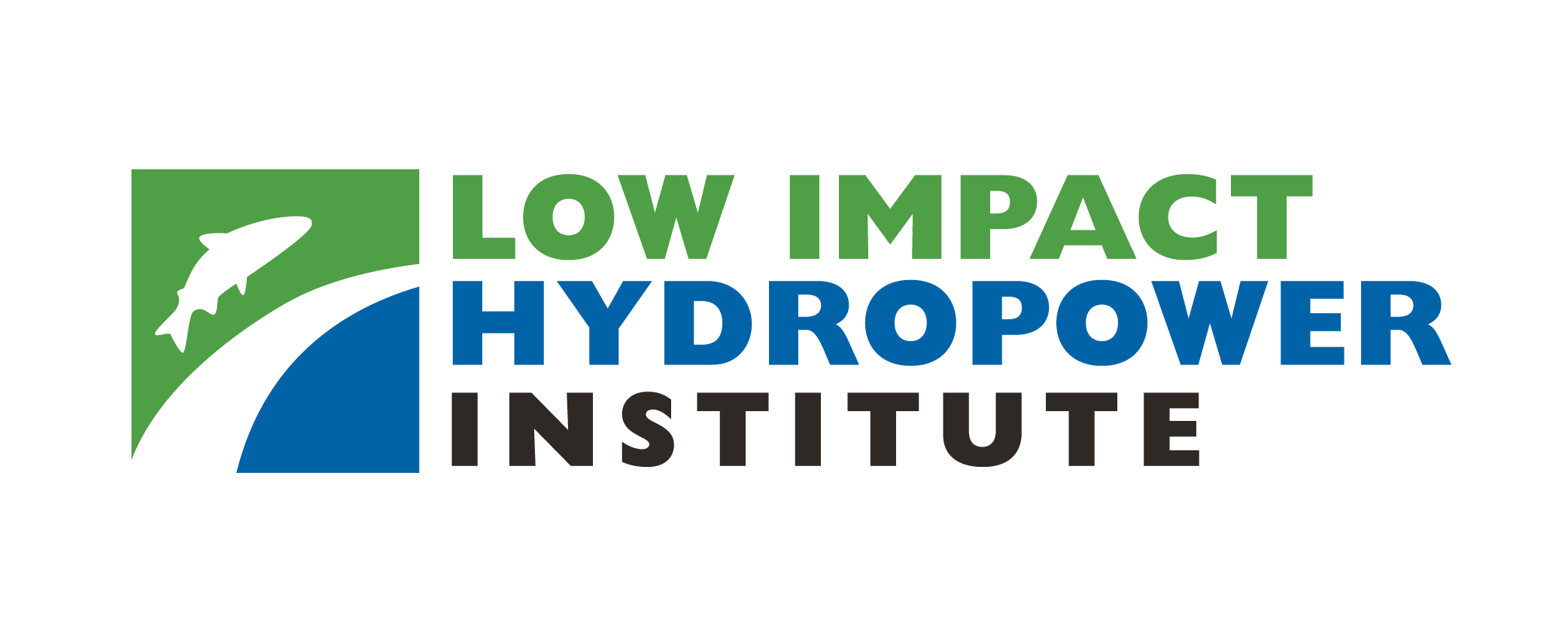Certificat LIHI #168 - Projet Milo, Maine

| Nom du projet | Milo |
| Numéro de certificat LIHI |
168 |
| Durée du certificat LIHI |
18 décembre 2019 – 17 décembre 2029 |
| Propriétaire | KEI (Maine) Power Management (III) LLC |
| État | Maine |
| Emplacement | Rivière Mile 2
Rivière Sebec |
| Capacité installée | 0,695 MW |
| Génération annuelle moyenne | 2 078 MWh |
| Type d'établissement | Au fil de l'eau |
| Fédération internationale de radio-télévision (FERC) Non. | P-5647, exempt |
Le projet Milo est situé sur la rivière Sebec, à environ trois kilomètres en amont de sa confluence avec la rivière Piscataquis, dans la ville de Milo, dans le comté de Piscataquis, dans le Maine. barrage Construite en 1823, elle alimentait six moulins le long de la rivière Sebec, dont une scierie, un moulin à farine, un moulin à bobines et Excelsior, et un moulin à laine. En 1920, la Milo Electric Light and Power Company y installa deux turbines hydroélectriques. De nombreuses autres améliorations furent apportées au cours de la décennie suivante, et une refonte complète fut réalisée pour répondre aux besoins. au fil de l'eau opérations. Les installations actuelles ont été construites en 1982 et sont entrées en service la même année.
Le projet comprend un bâtiment en forme de L de 8 pieds de haut déversoir surmonté d'un pied de haut tableaux d'affichage composé de deux débordements remplis de roches crèche en bois Des sections de déversoir mesurant respectivement 15 et 52 mètres de long. Une petite section en béton est située au point de rencontre des deux sections, ainsi qu'une centrale électrique. canal séparé du lit original de la rivière par une berme en terre. centrale Elle comprend trois turbines/générateurs d'une puissance installée totale de 0,695 MW. Un canal de fuite longe le lit initial de la rivière et le rejoint 230 mètres en aval.
Le projet fonctionne au fil de l'eau et met en eau un réservoir de 50 acres. Il prévoit des débits minimums instantanés variables selon le canal : 25 pi³/s dans le canal est (canal de fuite de la centrale) et 50 pi³/s dans le canal ouest (canal de bief dérivé). La seule exception à cette exigence concerne les débits entrants du barrage inférieurs à 75 pi³/s, et la différence entre le débit de 25 pi³/s dans le canal est et le débit entrant total est rejetée dans le canal ouest. Ce régime d'écoulement a été élaboré en consultation avec le Département des pêches et de la faune du Maine (MDIFW) et l'USFWS.
Les eaux en amont du projet sont classées en classe A. Les utilisations appropriées comprennent les loisirs de contact primaire et le soutien des habitats aquatiques. En aval du barrage, les eaux sont classées en classe B en raison d'antécédents de contamination par E. coli. Cette dégradation est probablement due à des débordements d'égouts unitaires ; les opérations du projet n'ont pas d'impact négatif sur la qualité de l'eau.
Historiquement, des espèces de poissons migrateurs comme l'alose savoureuse, le gaspareau, le hareng d'été, la lamproie marine, l'esturgeon à museau court, l'esturgeon noir et le saumon atlantique remontaient la rivière Sebec. Cependant, la construction de barrages sur le cours inférieur des rivières Penobscot, Piscataquis et Sebec a empêché ces espèces de migrer vers le projet. Bien que la migration soit bloquée pour ces espèces, le MDIFW a constaté que le projet crée une barrière importante pour empêcher les espèces envahissantes comme le grand brochet de remonter le cours d'eau.
Le lac Sebec est connu comme l'un des premiers plans d'eau à saumon atlantique enclavé du Maine. Ses affluents constituent un important habitat de frai et de croissance pour les populations sauvages de ouananiche. L'introduction du grand brochet dans le lac pourrait avoir des conséquences extrêmement néfastes pour cet écosystème. En 2011, l'Assemblée législative du Maine a adopté la loi LD 134 : Loi visant à protéger les pêcheries indigènes de ouananiche contre les espèces envahissantes. Cette loi interdit expressément les mesures de passage en amont dans le cadre du projet. Cela s'applique également au passage en aval, bien que des épisodes de fort débit aient déjà entraîné le passage de ouananiches adultes en aval. Parmi les autres espèces de poissons résidentes figurent le touladi, le baret, l'achigan à petite bouche, le ventre rouge du Nord, le brochet, le crapet-soleil, la perche et le mulet à cornes, entre autres.
Le terrain du projet s'étend sur environ 1,6 hectare. Les terres environnantes sont constituées de collines boisées inhabitées et de hautes terres boisées utilisées à des fins récréatives. Des propriétés commerciales et résidentielles sont situées à proximité. La Ville de Milo, autorisée par l'État, applique plusieurs restrictions relatives à l'aménagement des rives de la rivière Sebec, notamment une zone tampon s'étendant sur 76 mètres à partir de la laisse de haute mer sur les lacs et les ruisseaux. Une grande partie de la zone du projet est un habitat pour la sauvagine et les échassiers, offrant un important habitat de reproduction, d'alimentation, de migration et d'hivernage à ces espèces.
Parmi les espèces menacées ou en voie de disparition potentiellement présentes à proximité du projet figurent la chauve-souris nordique, la petite chauve-souris brune, la chauve-souris pygmée et le lynx du Canada. Aucun habitat essentiel pour ces espèces n'existe dans la zone du projet, et il est peu probable que les activités du projet aient un impact négatif sur ces espèces en raison de son emplacement. Le projet s'est également engagé à respecter la règle 4(d) de l'USFWS concernant la protection de la chauve-souris nordique, notamment en limitant l'abattage d'arbres aux périodes clés de l'année.
Les ressources historiques de la zone du projet comprennent le moulin américain et son complexe, situés sur la rive ouest du tronçon contourné. La Commission de préservation historique du Maine (MHPC) a indiqué que le projet n'aurait aucun impact sur les structures ou sites d'importance historique, architecturale ou archéologique. Le projet doit consulter la MHPC avant toute construction ou activité susceptible d'affecter les ressources historiques ou culturelles.
La petite zone du projet ne comprend aucune installation récréative, mais l'accès public est gratuit dans les zones sécurisées. Plusieurs sites de loisirs jouxtent le parc et offrent des ressources récréatives. Le parc commémoratif des anciens combattants, situé le long de la rive est, en amont du barrage, comprend des aires de pique-nique, des allées, un belvédère, une rampe de mise à l'eau et des quais. Le parc Doble, quant à lui, longe la rive ouest du bassin de retenue, en amont du barrage.
État de conformité
Il n’y a pas de conditions spécifiques à l’établissement dans le certificat actuel.
2024: Aucun changement important ni problème de conformité n'ont été identifiés. Le projet reste conforme sur la base de l'examen annuel.
2023: Aucun changement important ni problème de conformité n'ont été identifiés. Le projet reste conforme sur la base de l'examen annuel.
2022: Aucun changement important ni problème de conformité n'ont été identifiés. Le projet reste conforme sur la base de l'examen annuel.
2021: Aucun changement ni problème de conformité n'a été signalé. Le projet reste conforme sur la base de l'examen annuel.
2020: Aucun changement ni problème de conformité n'a été signalé. Le projet reste conforme sur la base de l'examen annuel.
2019: Le rapport annuel pour le certificat actuel n’est pas encore entré en vigueur.
Historique des certifications
1er janvier 2022 : La durée du certificat LIHI a été prolongée conformément à la révision 2.05 du manuel de certification LIHI 2e édition publié le 1er janvier 2022. Reportez-vous au tableau des établissements ci-dessus pour connaître la nouvelle durée.
17 avril 2020 : La décision de certification du projet Milo est devenue définitive après la clôture de la période d'appel, le 15 avril 2020, sans qu'aucun appel n'ait été déposé. La période de certification s'étend du 18 décembre 2019 au 17 décembre 2024.
16 mars 2020Le Low Impact Hydropower Institute a approuvé la certification « faible impact » pour le projet hydroélectrique de Milo, situé sur la rivière Sebec, à environ trois kilomètres en amont de sa confluence avec la rivière Piscataquis, dans la ville de Milo, dans le comté de Piscataquis, dans le Maine. Cette décision est provisoire et attend la fin du délai d'appel de 30 jours. Seuls les candidats ayant commenté la demande initiale pendant ce délai de 60 jours peuvent interjeter appel. Ce recours doit inclure une explication expliquant en quoi le projet ne répond pas aux critères du LIHI. Les demandes d'appel peuvent être soumises par courriel à comments@lowimpacthydro.org avec la mention « Projet hydroélectrique de Milo » en objet, ou par courrier adressé au Low Impact Hydropower Institute, 329 Massachusetts Ave, Suite 6, Lexington, MA 02420. Toutes les demandes seront publiées sur le site web. Le demandeur aura la possibilité de répondre, et toute réponse sera également publiée. Les demandes doivent être reçues avant 17 h (heure de l'Est) le 15 avril 2020. Le dossier complet et le rapport d'évaluation sont disponibles ci-dessous. Si aucune demande d'appel n'est reçue et que la décision devient définitive, la période de certification du projet s'étendra du 18 décembre 2019 au 17 décembre 2024.
3 janvier 2020: Le Low Impact Hydropower Institute a reçu une demande complète de certification à faible impact pour le projet hydroélectrique de Milo. Le LIHI sollicite les commentaires du public sur cette demande. Plus précisément, nous souhaitons savoir si, selon vous, le projet répond aux critères de certification à faible impact du LIHI, tels que révisés dans la 2e édition du manuel. Veuillez consulter le programme et les critères dans le manuel révisé du LIHI, puis les documents de candidature ci-dessous. Les commentaires directement liés à des critères spécifiques du LIHI (débits, qualité de l'eau, passage des poissons, etc.) seront très utiles, mais tous les commentaires seront pris en compte. Les commentaires peuvent être soumis à l'Institut par courriel à comments@lowimpacthydro.org avec « Commentaires sur le projet Milo » en objet, ou par courrier adressé au Low Impact Hydropower Institute, 329 Massachusetts Avenue, Suite 6, Lexington, MA 02420. Pour être pris en compte, les commentaires doivent être reçus au plus tard le 3 mars 2020 à 17 h (heure de l'Est). Tous les commentaires seront publiés sur le site web et le demandeur aura la possibilité d'y répondre. Toute réponse sera également publiée.
